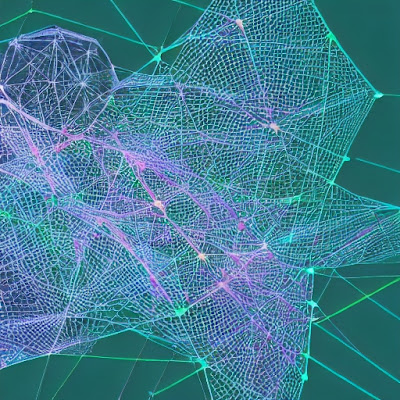In the dynamic landscape of artificial intelligence and machine learning, Graph Neural Networks (GNNs) have emerged as a powerful tool for modeling and understanding complex relationships within data. The versatility of GNNs has led to their adoption across various domains, attracting a diverse array of users seeking innovative solutions to intricate problems. In this blog post, we delve into the question: Who uses Graph Neural Networks? From academia to industry, healthcare to finance, the applications are broad, and the users are as diverse as the networks they analyze.
 |
1. Academic Researchers and Data Scientists:
Cutting-Edge Research
Academic researchers and data scientists form a significant user base of Graph Neural Networks. These professionals are at the forefront of pushing the boundaries of knowledge and exploring novel applications of GNNs. Research institutions worldwide are engaged in studying the theoretical underpinnings of GNNs, developing new architectures, and refining algorithms to enhance the capabilities of these networks.
Applications in Computer Science
In academia, GNNs find applications in various subfields of computer science, including natural language processing, computer vision, and social network analysis. Researchers leverage GNNs to model intricate relationships in data, enabling advancements in information retrieval, sentiment analysis, and community detection.
2. Industry Professionals and Data Engineers:
Social Network Analysis
In the business world, GNNs are utilized by industry professionals and data engineers for a range of applications. Social network analysis is a prominent use case where companies leverage GNNs to understand user interactions, detect communities, and optimize recommendation systems. Social media platforms, for example, use GNNs to enhance user engagement and deliver more personalized content.
Fraud Detection and Financial Analysis
In the finance sector, Graph Neural Networks are employed for fraud detection and financial analysis. The interconnected nature of financial transactions is well-suited for graph representation, allowing GNNs to identify anomalous patterns indicative of fraudulent activities. Additionally, GNNs contribute to risk assessment and portfolio optimization by modeling relationships among financial instruments.
Supply Chain Optimization
Supply chain management benefits from GNNs by modeling the complex network of suppliers, distributors, and logistics. This enables more efficient routing, demand forecasting, and inventory management. Companies in manufacturing, retail, and logistics leverage GNNs to optimize their supply chain operations.
3. Healthcare Professionals and Biomedical Researchers:
Drug Discovery and Bioinformatics
In the realm of healthcare and biomedical research, Graph Neural Networks are making significant contributions to drug discovery and bioinformatics. Molecular structures, protein-protein interactions, and genetic relationships are inherently graph-like, making GNNs well-suited for understanding complex biological systems. Researchers use GNNs to predict drug interactions, identify potential therapeutic targets, and analyze genomic data.
Patient Network Analysis
In healthcare analytics, GNNs are employed to model patient interactions, disease propagation, and healthcare provider networks. By representing patient data as a graph, healthcare professionals can gain insights into disease spread, identify high-risk populations, and optimize healthcare resource allocation.
4. Recommendation Systems and E-commerce:
Personalized Recommendations
E-commerce platforms leverage Graph Neural Networks to enhance recommendation systems. By modeling user-item interactions as a graph, GNNs can capture nuanced relationships, providing more accurate and personalized recommendations. This is crucial for improving user experience and increasing customer engagement.
Customer Segmentation and Marketing
GNNs play a role in customer segmentation and targeted marketing strategies. By analyzing the network of customer behaviors, preferences, and interactions, businesses can tailor marketing campaigns to specific segments, optimizing their outreach and improving conversion rates.
5. Government Agencies and Law Enforcement:
Social Network Monitoring
Government agencies and law enforcement entities use GNNs for social network monitoring and analysis. By modeling the relationships among individuals and organizations, GNNs can aid in identifying potential threats, tracking criminal networks, and improving intelligence gathering.
Cybersecurity
In the realm of cybersecurity, GNNs are employed to detect patterns of malicious activity within network data. By understanding the intricate relationships in data traffic, GNNs contribute to the identification and prevention of cyber threats, enhancing the overall security posture of organizations.
6. Startups and Innovation Hubs:
Novel Applications and Entrepreneurship
Startups and innovation hubs are increasingly exploring novel applications of Graph Neural Networks. Whether it's creating innovative social networking platforms, developing new healthcare solutions, or optimizing logistics and transportation, startups leverage GNNs to bring fresh perspectives and solutions to the market.
Technology Disruption
GNNs play a pivotal role in technological disruption, and startups at the forefront of innovation are incorporating these networks into their products and services. The agility of startups allows them to quickly adapt GNNs to various domains, contributing to the rapid evolution of the technology landscape.
Conclusion
The user base of Graph Neural Networks spans a broad spectrum, reflecting the versatility and applicability of this technology across diverse domains. From academic researchers and industry professionals to healthcare practitioners and government agencies, the adoption of GNNs is driven by the need to model and understand intricate relationships within data.
As the field of Graph Neural Networks continues to evolve, collaboration between different user groups becomes increasingly important. The interdisciplinary nature of GNN applications underscores the significance of knowledge exchange between academia, industry, and other sectors. As users continue to explore the potential of GNNs, the technology is poised to shape the future of artificial intelligence, unraveling complex networks and opening new frontiers in data analysis and understanding
